Hip alignment can be challenging—perhaps more so than the alignment of any other joint in the body. This is true not just because hip tightness is such a common phenomenon. It is also true because we don’t spend much time bringing awareness to our hips and core. Poor hip awareness in turn makes it very challenging to place the hips intentionally, but learning to do so produces many amazing benefits.
None of our joints are as flexible as they were when we were infants. As we age, however, the hips typically lose a greater percentage of their range of motion than any other joint in our bodies. The hip joints are extremely flexible when we are born, but in our daily lives we make use of a very limited part of their original range of motion. Muscles and connective tissue will tighten up naturally to permit no more than the range of motion that we regularly require of them, and thus the hips get ever tighter with age. Part of the reason for this tightening is efficiency. In order to be able to walk and run efficiently, it is actually advantageous to have hips that don’t permit much more than the range of motion required for walking and running.
Tight hips are good for running, but not so good for hip health
One peer-reviewed study reported that marathon runners whose hip range of motion is only large enough to permit the motion of running are about 15% more efficient at running than people whose hips are more flexible. If you have very flexible hip joints and you find running unstable and uncomfortable, your high hip flexibility is probably part of the reason. So why would you care about hip flexibility, if all you want to be able to do is sit on chairs and in cars, and walk, run, and ride a bike? Isn’t that enough?
Research indicates that regularly taking joints through their full range of motion is important for longterm joint health. This appears to be the case because it helps maintain the integrity of the smooth cartilage that lines the joint surfaces (called the articular cartilage). The mechanism that keeps the articular cartilage healthy is pressure on the cartilage. To create that pressure across the entire surface area of the cartilage, it is helpful to regularly move each joint through its full range of motion. The fact that most people in industrialized societies only use a very small part of their full range of hip motion may help explain the growing epidemic of hip replacement surgeries in the industrialized world. However, as far as I know there is no evidence yet of a direct causal link.
Hyper-mobile hips are equally problematic
Let me take a moment here to emphasize that extreme hip mobility is also detrimental to hip health. In fact, excessive hip mobility can also lead to hip replacement surgery. (See yoga teacher Jill Miller’s personal journey to hip replacement here). As with most things, the place we want to be is somewhere near the place of balance in the middle. We want hips that are neither too tight nor too open. However, unless you are clinically hyper-mobile (a genetic condition) or have been obsessively stretching your hips for the last few decades (like Jill Miller did), your hips are probably on the tighter end of the spectrum. This means that most people will benefit from increasing their hip range of motion.
Tight hips can contribute to lower back issues
Another reason to maintain range of motion in the hips besides the health of the articular cartilage of your hip joints is the health of your lower back. If you try to do something with your hips that you don’t usually do, like sitting on the floor, your tight hip joints will resist the motion, and some other body part gets to pick up the slack. That’s almost always the lower spine (but sometimes also the knees). The tighter your hips, the farther the lower back has to flex to compensate for the lack of motion in the hip joints.
This excessive movement in the lumbar spine is a common source of lower back pain, the most common health complaint in the US. It’s actually quite shocking how often I encounter students with very tight hips and hyper-mobile lower backs. This is not a healthy combination. So increasing the range of motion of your hips offers two main benefits: improved health of the hip joints (which can suffer from underuse), and reduced strain on the lower back (which suffers generally from overuse).
A simple hip stretch you can do almost anywhere
Chairs bear a good part of the blame for our lack of hip flexibility. Sitting cross-legged or crossing one leg over the other even on chairs and couches is a great way to maintain hip flexibility. Assuming you are sitting as you read this, how are you sitting? What shape is your lower back making? I happen to be sitting here typing on the couch with my legs crossed.
Hip awareness is a big part of the challenge, and the solution
Even for people whose hips are relatively open, hip alignment can still be challenging. One main reason is that we typically don’t have a very good idea of what our hips are doing. This is understandable from an evolutionary perspective, as it is much more important for our brain to know where our hands, feet, and face are in space. After all, you are much more likely to get your finger trapped somewhere than your hip. Consequently, our brain uses much more of its processing power to interpret information coming from spatial sensors (called proprioceptors) in our hands, feet, and face than from sensors located in the hips. It is important to point out that we all have plenty of proprioceptors in our hips. Increasing our awareness of what our hips are doing is simply a matter of teaching our brain to listen to the messages that those sensors send.
One trick to make up for the poor processing of spatial information coming from the hips is to place your hands on your hips. This way you can use the brainpower devoted to locating your hands in space to figure out what your hips are doing. The more you bring your awareness to the position of your hips, the easier it becomes for you to keep track of what your hips are doing. This in turn will make your hip openers more effective as you become more adept at placing the stretch exactly where you need it.
We are experts at avoiding stretching what is tight
Why aren’t we automatically placing the stretch where we need it? Because of our natural tendency to conserve energy (i.e., be lazy), which causes us to complete any motion by following the path of least resistance, using our strong muscles to articulate our flexible joints, while ignoring our weak muscles and tight joints. When we do poses that are designed to open tight hips, we tend to do much of the required movement with the lumbar spine instead, because it simply requires less effort (both physical and mental) to articulate the lower back instead of the hips.
The hip bone’s connected to the … back bone
Don’t believe me? Try this simple test: Lie down on your back with extended legs, and notice how your natural lumbar arch keeps your lumbar vertebrae off the floor. Draw one knee towards your chest and hold your shin with straight arms. This is a simple act of hip (and knee) flexion, the one hip movement that we actually do all day long and thus are relatively good at.
Holding your shin, notice whether your lumbar spine is still off the floor. It’s not? Well, that means you flexed your lower back unconsciously in addition to flexing your hip joint to complete the movement. Why did you do that? In order to follow the path of least resistance, by minimizing the movement in the hip joint. Now lift your lower back off the floor by tilting your tailbone down towards the floor, and notice how the stretch sensation in that hip increases as you stop compensating with your lower back. When we compensate with the lower back, it is difficult if not impossible to get a good hip stretch, while at the same increasing the risk of lower back overuse and pain. This week we will focus on aligning our hips neutrally to protect our lower backs while ensuring that our hip stretches actually stretch our hips.
More neutral hips for increased serenity
Notice also that when you lifted your lower back off the floor while holding on to your knee that you feel more spacious in your chest. Better hip alignment doesn’t just improve hip joint health and lower back health, but it also helps create greater spaciousness through better spinal alignment. The increased spaciousness that you feel is real, and facilitates a smoother, deeper, and more effortless breath (as well as improved blood circulation), because you are literally allowing more air into your lungs with less effort when your spine is in a more neutral shape. Whenever we avoid stretching our hips, the rounding of the spine inhibits the breath. And when you can’t breathe, it’s very challenging to remain present in the moment with a sense of serenity, which to me is one of the main reasons to be practicing yoga.
If you want to experience the connection between your breath and your serenity, come into Dhanurasana (Bow Pose) for a few breaths and observe your serenity. Bow Pose is not a difficult shape to make for most people (feel free to use a strap around the ankles if you cannot reach them with your hands), but nonetheless most people experience it as very difficult and unpleasant. The reason is that in Dhanurasana your breath is extremely labored, because you have to lift almost your entire body weight with each inhale in order to get any air. If you focus on taking deeper, more delicious breaths in Dhanurasana, you will probably feel that the pose becomes much more enjoyable. Learning to maintain a spacious breath even under challenging circumstances helps you learn the immensely powerful lesson that it is possible not to get stressed out even when stressful things are happening.
Try it now: Side-to-side hip alignment
Do a couple of sun salutations to warm up, and then come into Warrior II with your right foot forward, perhaps facing a mirror in which you can see your hips. Instead of reaching your hands out immediately to shoulder height, place them on your hip crests. Bring your awareness to the position of your hands (or look in the mirror) and notice that in all likelihood the left hand (and thus the left hip) is higher than the right (front) one, and that your tailbone is tilting up behind you.
If this is true and your shoulders are level (which they typically are), then your spine is side bending and back bending. Why is it doing that? So that your hip joints can avoid having to stretch more than they have to. Ideally with eyes closed, try to level your hips side to side by leveling your hands, and notice that the improved alignment of level hips may increase the intensity of the hip stretch, particularly in the back leg, but that this movement also increases your sense of spaciousness, and frees your breath.
Front-to-back hip alignment
Then note whether your hips are level front to back, or whether your tailbone is tilting up behind you. Intentionally increase the anterior hip tilt (or inner spiral) and feel how this integrates the hip joint of the rear leg by pulling the head of the femur deeper into the hip socket. Then engage your abs and scoop your front sit bone towards the big toe of the back foot (posterior hip tilt or outer spiral) to bring the hips more level front to back.
Notice how this movement helps align your bent right knee over your second toe. Notice how it also further intensifies the stretch, especially in the front inner thigh. Note also that this posterior hip tilt creates more space in the lower back and helps you breathe into your lower back ribs. The intensification of the stretch sensation makes it obvious that before the adjustment you were indeed subconsciously (but effectively) minimizing the hip stretch.
Neutral hip alignment also builds core strength
Also notice how emphasizing anterior hip tilt on the rear leg side and posterior hip tilt on the front will make you feel more integrated, stronger, and simply more “warrior-like”. This gives you a visceral understanding of why this pose is called Warrior II. Inhale your arms to horizontal if you like, then exhale and expand out into the soles of your feet, your fingertips, and the crown of your head to balance your new-found strength and integration with spaciousness and expansion. Aligning your hips has also aligned your spine, which in turn has freed your breath. Stay for a few smooth, savored breaths, then repeat the alignment sequence on the other side.
All this work of aligning the hips to stop avoiding hip stretches points to yet one more benefit of better hip alignment. In order to align the hips more neutrally you HAVE to use your core muscles, and use them intelligently. This is true in all kinds of yoga poses as well as in real-life situations like riding your motorbike, driving your car, or sitting at your desk. Thus better hip alignment doesn’t only improve your stretching. It also increases the strength of your core muscles and simultaneously strengthens the connections between your brain and your core, all while freeing your breath and increasing your serenity.
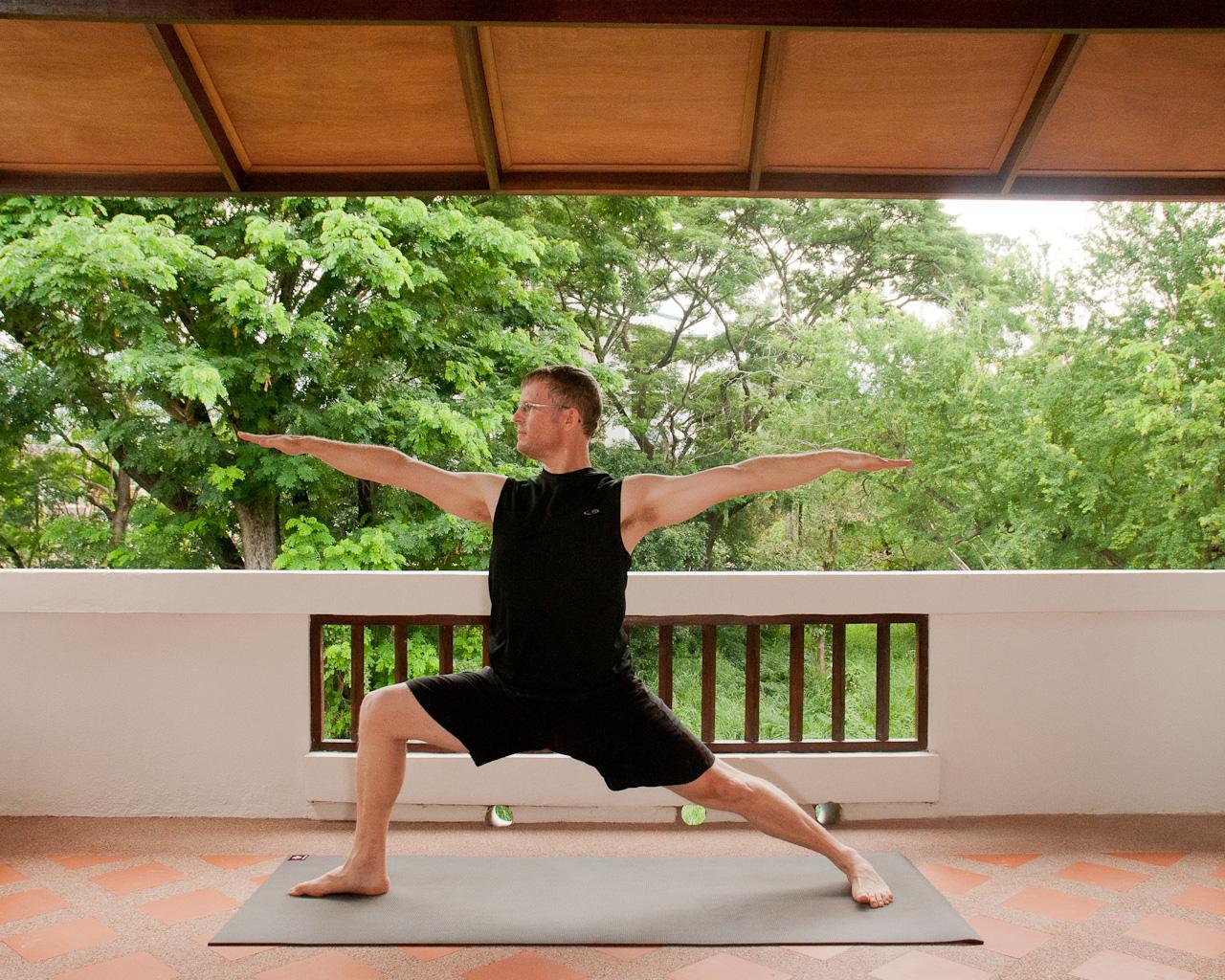
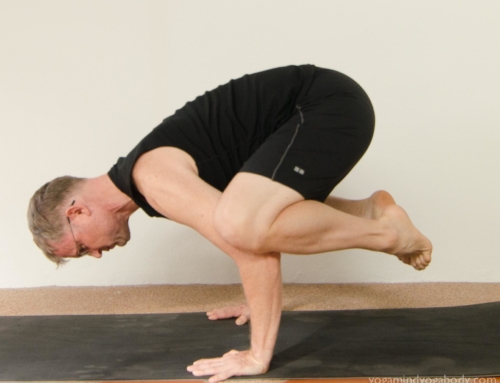
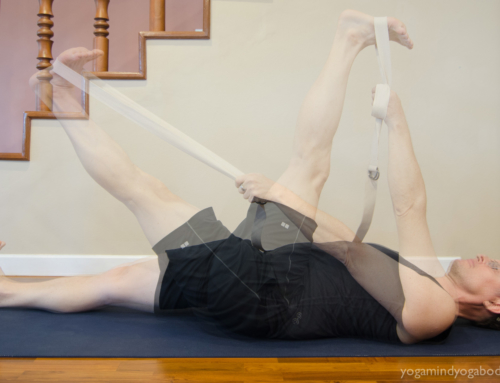
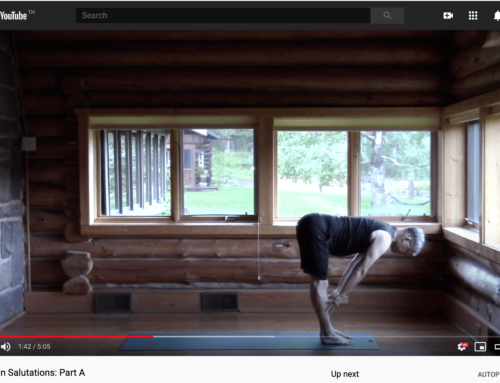
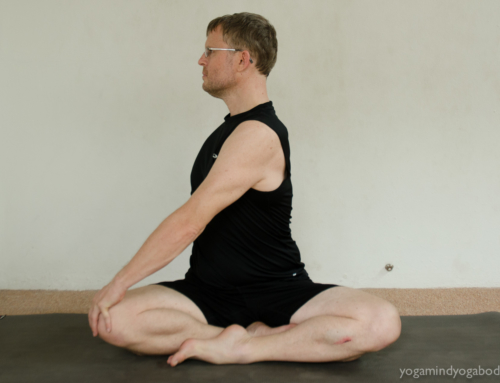

I’ve been looking goodbye for a stretch that could paintings for me. I’m hyper-bendy but have absolutely tight hip flexors, because of this I frequently discover it very hard to get an amazing stretch.
I’ve been in so much ache for the past year or so, and even after seeing some of physios none had been capable of assist me get any comfort.
This stretch is best I can experience it targeting precisely wherein I need and it’s helped a lot. Thank you!
Feel free to send me some photos of you, especially side photos in tadasana and high lunge. But even without photos, based on your description, I would expect that you under-use your abs in yoga and probably in daily life as well. In fact, because of tight (Meaning permanently contracted, not physically short) hip flexors, it’s probably very difficult for you to even figure out how to engage your abs. This is due to a reflex called reciprocal inhibition. But as soon as you figure out how to engage your abs, you will solve your tight hip flexor problem because learning to engage your abs will begin to relax your hip flexors due to the same inhibition reflex. Good luck!